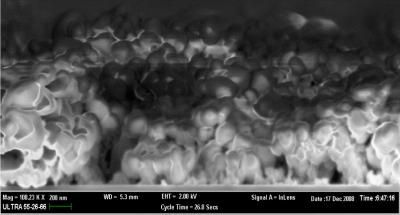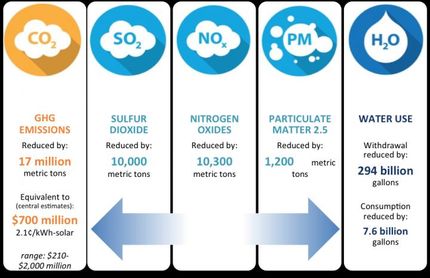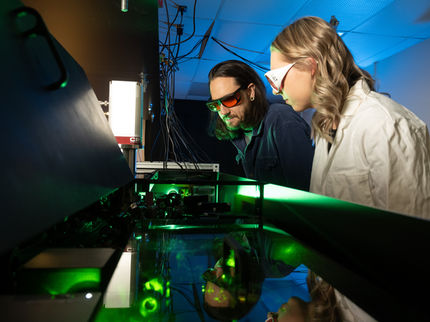New approach to solar cells
Advertisement
An interdisciplinary team of UC Davis and UC Santa Cruz researchers is taking a novel approach to solar power, one that promises to lead to a technological breakthrough. By using nanoparticles of germanium, silicon and other materials, the researchers hope to produce solar cells far more efficient than the current state of the art. The project was recently awarded $1.5 million over three years from the National Science Foundation.

This is a transmission electron microscope image of nanoparticles in an experimental solar cell.
Gergely Zimanyi, UC Davis
Conventional solar cells all operate on the same principle of "one photon in, one electron out," said Gergely Zimanyi, professor of physics at UC Davis and principal investigator on the NSF grant. In other words, one particle of light, or photon, hits the solar cell and generates one electron to produce an electrical current.
The efficiency — energy out compared to energy in — of a solar cell operating according to this principle is capped by a theoretical maximum of 31 percent. But by constructing solar cells from extremely small nanoparticles, the UC researchers aim to generate several electrons for each photon, raising the maximum efficiency to between 42 and 65 percent.
The one-photon-in/multiple-electrons-out paradigm has been demonstrated at the Los Alamos National Laboratory, Zimanyi said — but the Los Alamos group did not build a functioning solar cell based on this paradigm. The UC Davis/UC Santa Cruz team includes scientists with experience making solar cells from nanoparticles, giving hope that the group will be able to construct a fully functioning and well-optimized solar cell from germanium and silicon nanoparticles, he said.
The team members are: Zimanyi; UC Davis chemistry professors Susan Kauzlarich and Delmar Larsen; Professor Giulia Galli, who holds a joint appointment in physics and chemistry; Professor Zhaojun Bai, Department of Mathematics and Computer Science; Debashis Paul, professor in the Department of Statistics; and Susan Carter, professor of physics at UC Santa Cruz.
The interdisciplinary nature of the team was crucial to getting the proposal funded, Zimanyi said. "NSF asked for a collaborative effort between materials sciences, chemistry and mathematical sciences," he said.
Zimanyi, Galli and Bai will conduct theoretical and computer-modeling studies, with Paul providing statistical expertise; Kauzlarich's lab will synthesize the new nanoparticles, Larsen's group will characterize them and Carter's lab at UCSC will develop a working device. A prototype cell has been already constructed prior to getting the grant and exhibited an efficiency of about 8 percent, which Zimanyi described as a very encouraging result given the limited resources going into its construction.
The team will collaborate with the California Solar Energy Collaborative, which is based at UC Davis and led by Pieter Stroeve, professor of chemical engineering and materials science.

































































